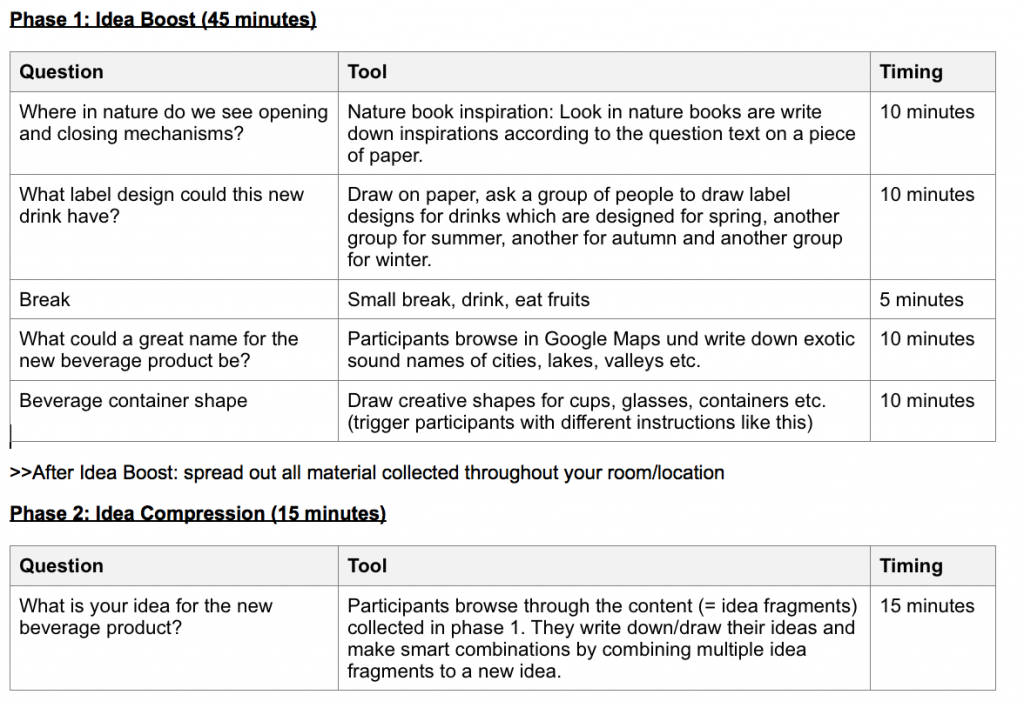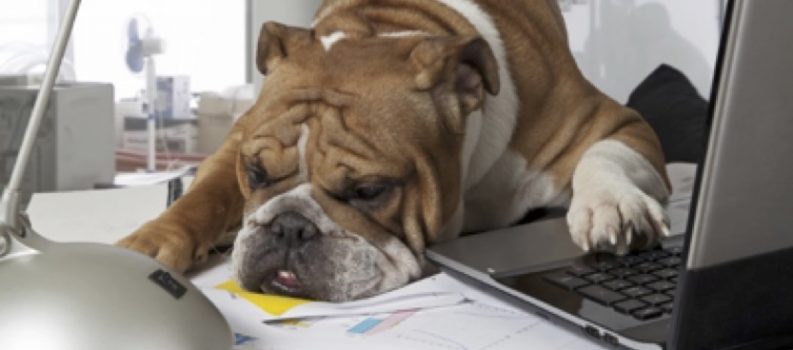To be creative and have the right ideas at the right time for the right problem, can be quite a challenge, no matter if you need creative solutions in your private or, even more importantly, in your business and professional life.
You think, you don’t need ideas or structured creativity in your business life? Now, that just wrong, mate! In any professional career, coming up with creative solutions is a major factor for success. You might need a new and original name for the product or service you are managing and working on, or you are maybe part of an innovation team and need to come up with new innovations and ideas for a certain business field matching your company’s strategy; or you just need a creative solution in a technical question or simply need an idea for the motto and/or activities of your next team trip. No matter where you need that sparkling thought, here are 7 killer tips how to structure your next brainstorming the efficient and productive way!

Brainstorming tip 1: Break down one complex tasks in to simple sub-questions
One golden rule when you brainstorm is that you don’t ask too much of thinking of your brainstorming crew. This means, it will be easier to confront your brainstorming participants with simple questions, that represent one aspect of the problem, rather than let them think on the whole problem. I’d like to call these questions “sub-questions”. To give you an example: you could ask your folks to come up with ideas for a new kind of beverage product, or you could also ask your participant first about the potential name, than about the label design, than about the container shape, than about the fitting design or the content of the future beverage product. These sub-questions are way easier to answer and you collect ideas from many different points of view.
Brainstorming tip 2: Brainstorm in multiple iterations
Always plan your brainstorming by using multiple iteration or brainstorming phases. Typically, in the first phase, I call it “idea boost”, you would circle around your topic with different sub-questions (see tip 1) and you would collect a big number of what I would call “idea fragments”. In the second iteration, let’s call this “idea compression”, ask your participants to follow the main question of your brainstorming (new ideas for beverage products) and to let themselves be inspired by the material collected in the idea boost phase and to make creative combinations based on the idea fragments explored. This works every time, which I know for a fact. I have used this approach in over 600 high-scaled ideation and innovation projects for clients from around the world, having companies like Reuters, Nokia, Daimler, BMW, British Telecom, Volkswagen, Siemens and many more among them.
Brainstorming tip 3: Use analogies, change view point
When you brainstorm on your sub-questions, it is also important to leave the known paths and get your participants be inspired by different means. You could ask about similar problems like yours are solved in different fields or industries and use this as an inspiration for your project, or you could even imagine which ideas would result if not your client (or the company you work for), is the owner of a future solution but a different company or organization. Let’s keep the beverage example. Say your customer was the Coca Cola Company and you have the task to come up for new beverage ideas for Coke, you could also ask how a beverage product would be like if it came from other companies or brands. Ask “What is a beverage like that comes from Google” or “What does a beverage look like that is launched by “Dolce&Gabbana”, and so on. Use this approach, and you will see that it will open a completely new door to creativity and spice up your creative workshop dramatically.
Brainstorming tip 4: Alternate your creativity tools
Try to use a different creativity tool, each time you alternate your sub-question. There are many creativity tools out there. For instance, you could print your sub-questions onto paper and ask your folks to draw or write their answer there. Or, you can distribute a wide variety of printed magazines to your workshop participants and ask them to randomly cut out pictures and phrases, glue them on an empty piece of paper and write or draw their ideas related to what they have discovered in the magazine. Also, you could start an “idea race” and for instance let your participants write down 5 ideas on a piece of paper and ask them to run e. g. 5 meters, get a stamp or sticker, run back and repeat this until the time is up – the participant with the highest amount of stickers wins a small prize. Like this, you can easily integrate the element of gamification in your brainstorming session. Or, you can have 4 – 6 stations, each station holds a question and all participants are allocated to one station. They would start writing down ideas on post-it-sheets and place them at their station. After 1 or two minutes, participants rotate to the next station and repeat the process until each participant has visited every station. Need a great creativity tool to come up with names? Just ask people to open Google Maps and let them randomly write down exotic sounding names of places, cities, lakes etc. This will lead to a great number of potential names for your product or service! Have an idea for your own tool? Just give it a try!
Brainstorming tip 5: Have a crystal clear brainstorming program
Timing and a clear program is also a key to a successful brainstorming session. Be sure that you define a strict program with a clear timing and guide your brainstorming crew through that program. This is how a program could like for our beverage example:

Brainstorming tip 5: Make your brainstorming a happening
Well it all says in the title. Make your brainstorming session a true happening. Send a nice invitation to the participants, give a small outlook on the topic and/or the program, but don’t say too much. During the brainstorming session, stick to your program and support your session with feel-good music during the creative work and maybe a small selection of drinks and fruits (don’t forget to make breaks, the help to revitalise your brains!)
Brainstorming tip 6: Document your idea outcome in a systematic way
This might sound like a no-brainer, but still, I would like to mention this one. Make sure that you document your workshop outcome in a systematic manner. The best way to do this is to setup a simple word-file and to enter (or have entered) all content sorted by the task resp. by the questions asked. If there are pictures, describe the pictures and/or make pictures and pace them in the word document accordingly. In case you did a short rating round with point stickers, just write down the number of points.
Brainstorming tip 7: Diverse group of brainstormers
Last, but not least, a high level of diversity in the brainstormer’s group brings you halfway to creative success. Make sure that you carefully select who you are going to invite to participate in your brainstorming session. Ask topic insiders as well as topic outsiders to join in. Do you often have to struggle with those annoying naysayers in your team? Get them into the boat, too. It’s much harder to shoot against something if you were actually a part of the game. But make sure they don’t outnumber the other brainstorming participants. If you have the possibility to do that, (but that is not mandatory) you can also invite external thinkers like customers, consumers or why not an average joe to your brainstormings. By the way, young adults between 16 and 24 years are proven to be extraordinary creative in brainstorming sessions. External thinkers bring new view points and valuable insights into your project. But don’t look at them as part of a focus group, but just as another group of people who share great ideas of theirs with you!
About the author: Sandro Morghen is the CEO and Co-founder of Yutongo. Yutongo is a unique web based application for systematic idea development and online brainstorming. The core process of Yutongo follows the same principles that were shared in this article. Yutongo is free to use.













